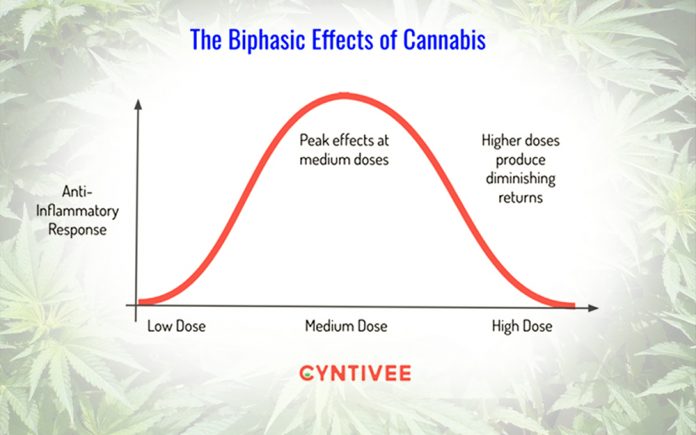
BY RUTH HILL R.N.
In trying to pick a topic to write about I came across an article concerning the hypothermic side effect of delta-9-tetrahydrocannabinol (THC). It appears several folks get an intense cold sensation. After doubling my dose of THC one day, I walked around freezing, wanting to put the heat on in 110° weather. Cannabinoids can change body temperature in a dose-dependent manner.
Research on rats demonstrates high doses of cannabinoids can cause hypothermia following exposure to THC, low doses of THC can cause hyperthermia. However, there are no clinical case reports of life-threatening hyperthermia associated with the use of cannabis alone.
The body has a brilliant system for regulating temperature by the hypothalamus, which balances heat production and heat loss, with the goal of maintaining homeostasis. The hypothalamus does not work alone — it coordinates with skin, sweat glands, and blood vessels, the “vents, condensers and heat ducts of your body’s heating and cooling system.”
The abuse of synthetic cannabis products that are more potent can cause deleterious side effects with young adults who believe synthetics like Spice are safe. Synthetic cannabinoids increase blood pressure through non-cannabinoid mechanisms. Structurally HU-210 is the molecule in Spice similar to Δ8-THC and 11-Hydroxy-Δ9-THC and is more potent than natural THC from cannabis with an extended duration of action. In July,2009, the US Drug Enforcement Agency (DEA) placed HU-210 on its Drugs and Chemicals of Concern list.
Any, body-temperature changes caused by cannabis is usually mild and passes quickly. Smoking will not cause any significant issues related to body heat. If uncomfortable symptoms persist, you may want an evaluation by a medical professional for other issues like hyperthyroidism. Follow Riley Dee on Tiktok at https://www.tiktok.com/@cannabichem
All side effects from ingesting cannabis are dose-dependent and dissipate within hours. The half-life of THC for an infrequent user is 1.3 days. For heavy users, the half-life can be 5-13 days. This means that it takes about 1.3 days for half of the THC metabolites to be eliminated from the body in an infrequent cannabis smoker’s body. Specimens can be found to be positive after 4, 5, and 12 days of consumption in infrequent users. In heavy users’ positive results were found after 17, 22, and 27 days. Half-life for oral cannabidiol (CBD) in humans, is about 1 to 2 days.
Notice how I emphasized side effects are dose-dependent? How can these compounds do both, relieve stress, anxiety, then cause anxiety, allow you to sleep at night then cause insomnia? The other rule about cannabis side effects is the “biphasic effect.” The biphasic effect makes certain compounds — including CBD, caffeine, and alcohol — to have an opposite effect depending on whether you take smaller or larger amounts.
Cannabis plays a vital role in maintaining cellular balance in the human body. The goal is to find the Goldilocks zone. Too much, too little, or the wrong combo of cannabinoids can have a biphasic effect causing the opposite. Do you know anyone who drinks coffee in the morning to rinse the cobwebs in their brain, and then drinks coffee at 2 am and proceeds to fall blissfully asleep?
The biphasic effect is the most frequent reason people discontinue using medical cannabis. Environmental, medical, and activity changes all affect response to cannabis. Knowing how to juggle and titrate your dose is a skill developed over time, not a fixed constant like taking 100 mg of Synthroid for life. Cannabis users learn to manage unexpected operations, muscular injuries, common colds, or terminal diseases with various doses and ratios of THC and CBD.
If you have given up on using cannabis visit holistic caring for a professional coach who can reduce the pharmaceuticals in your medicine cabinet and replace them with various combinations of cannabis for the maladies you encounter. It is worth the effort when you remember side effects from pharmaceuticals are lethal but there is no documented case for death by cannabis.
The graph above is a replica of Figure 23 in CBD: A Patient’s Guide to Medicinal Cannabis by Leonard Leinow + Juliana Birnbaum.
Send comments to info@ruthahillrn.com










































